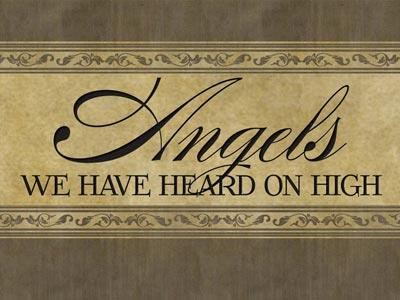-
The Christ In A Manger
Contributed by Stephen Aram on Mar 24, 2020 (message contributor)
Summary: We have heard the story so often that it seems obvious that Christ was born in a manger. But that would have been shocking to the world of that day.
I always enjoy the chance to meet people from different cultures and learn how 2 people from 2 different cultures can look at the same event and see it differently.
Years ago, we lived in New Delhi India. Kathy and I had to take a bus to a shop in the old city, so I brought my Bible along to read on the bus. We got off the bus and walked through a very crowded bazaar in front of the largest mosque in Delhi, the Jama Masjid. There was a vendor selling julabis, a very sweet snack, pretty greasy, so I got one for a snack.
I went into a tiny shop with my Bible in one hand and my julabi in the other, sat down to talk business, and put my Bible on the floor right at my feet so I wouldn’t forget it.
And the shopkeeper gave me a very strange look. Before we did any business, he looked at my Bible and said, “That’s a holy book, isn’t it? I would never eat greasy snacks while I carried a holy book. And I would never put a holy book on the floor by my feet. When I am done reading it, I put it on a shelf that’s higher than my head to honor it.” For him the floor and a holy book just didn’t go together. That was interesting. I do honor my Bible, but I do it by reading it almost every day and working very hard to live out what it tells me. And I still might put it on the floor sometimes. I don’t think that’s the point of honoring the Bible. But to that man, a holy book just didn’t go together with greasy snacks or the floor.
Some time later we moved to the Netherlands, where we were on staff in a sort of Bible School. Every Saturday the kitchen crew would put out a big tub of peanut butter, a big can of jelly, and loaves and loaves of bread for everybody to help themselves for a simple lunch. Our Dutch friends would watch us Americans make peanut butter and jelly sandwiches and once one commented that they would never put both peanut butter and jelly in the same sandwich. They would take one slice of bread and spread just peanut butter on it, or just jelly. And they would always spread that peanut butter out, pretty thin across the bread.
And they would watch us Americans put a huge glob of peanut butter on the bread, so thick that it would just stick in your throat if you ate it alone. But that’s what the jelly is for. If you put enough jelly on top of the peanut butter, it works as a lubricant to get the sandwich down. And our Dutch friends watched this with the strangest look on their faces.
That was a puzzle to me for a while, but I finally understood why they saw it differently. To the Dutch mind you eat a sandwich for the nutrition in the bread. And they had wonderful, whole grained breads. And you would put a little bit of topping on top of the bread, but it was only for taste. The bread is the important part and if you got carried away with the fillings, that was decadent.
But for us Americans, we were used to highly processed bread that didn’t have much nutrition at all. We saw the peanut butter as the purpose for eating a sandwich and the bread was just to keep it from sticking to your fingers. It all depends on how you see the bread.
This Christmas Eve I want us to look again at two verses in Luke’s account of the birth of Jesus. It seems pretty simple and straightforward to us, but it puts two things together that just wouldn’t seem to fit to a first century Hebrew mind at all. The two verses come from the message of the angels to the shepherds. We find it in Luke 2:11 and 12.
11 to you is born this day in the city of David a Savior, who is the Messiah, the Lord. 12 This will be a sign for you: you will find a child wrapped in bands of cloth and lying in a manger."
Now we’ve all heard that story before. We’ve heard it many, many times. Of course baby Jesus was laid in a manger, everybody knows that! But have you ever realized that those two things, the Christ and a manger, just didn’t go together! The Christ should never be laid in a feeding trough!
Every little Jewish boy or girl that had any religious training in Jesus’ day knew that God had promised that some day he would send someone very special to save the nation of Israel. They called him the ‘anointed one,’ the one that God had singled out for a very special ministry. In the Hebrew language the anointed one was called the “Messiah.” In the Greek language he would be called “Christ.” Christ isn’t Jesus’ last name, it’s a title and Christ and Messiah mean the same thing.

 Sermon Central
Sermon Central



